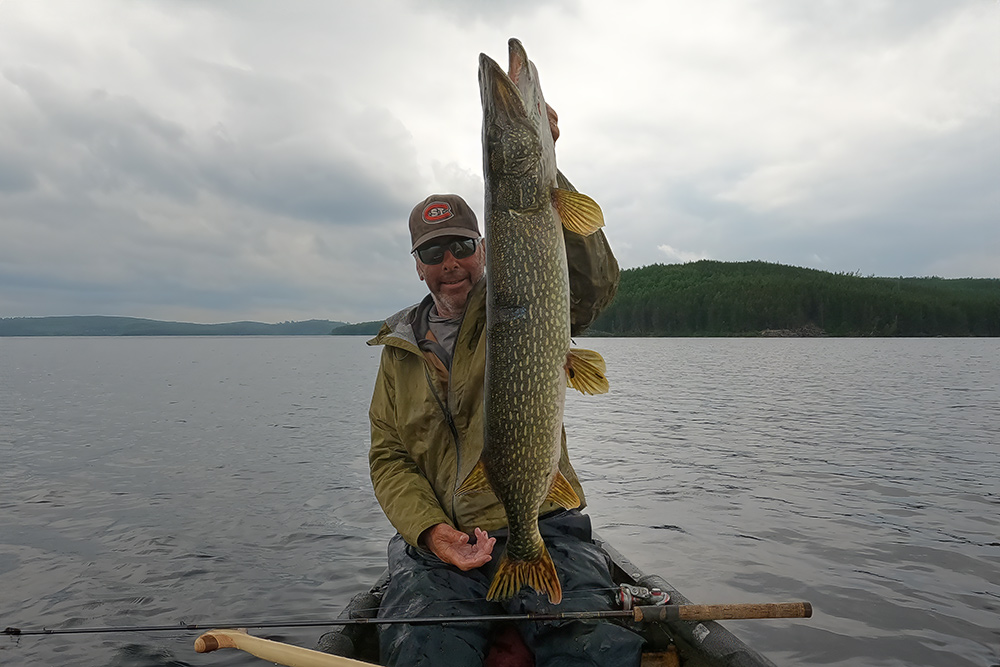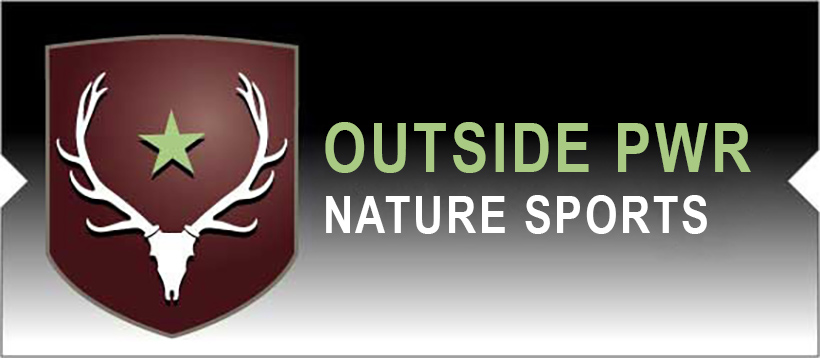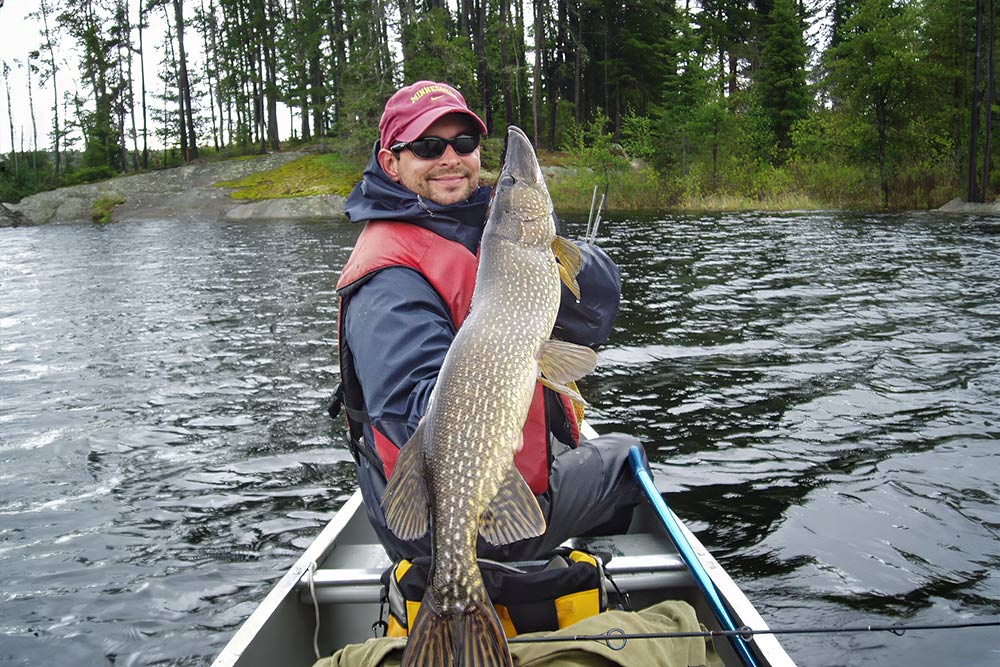Author Pete Riola
BWCA Quetico Fishing
Effective Tactics for Landing Big Pike in a Canoe.
Big Northern Pike a Challenge in a Canoe.
I’ve learned a thing or two in about 300 days of BWCA/Quetico adventures and one of them is how to land over-size northern pike while canoeing. We’re talking northern pike over 36 inches or about 12 pounds and bigger.
The moment this lesson was learned…Memorial Day Weekend 1992. At this point I had about 25 days of fishing in canoe country. The catch rate on these pike was lower than it needed to be. Lost fish were naturally going to happen. Most were hooked on 8lb test while jigging for walleyes and smallmouth. However some details of these pike battles became more obvious. The first being if the fish remains hooked for the first 15-20 seconds you have probably hooked the big pike in the upper lip or side of the face giving the angler a shot at landing this large fish. While jigging the bottom most pike eat the jig like a walleye…they tip down a bit and grab it. The bite is no different than a walleye or smallie. Now some certainly freight train the jig but those fish typically break you off quickly. Lesson one becoming more clear to a 29 year was this: most of these big pike were lost after a good battle was because they were allowed to face the canoe and dive under it. This causes extreme stress on the line and the rod.
This video clip taught me much.

Author with a 42 inch northern pike caught while walleye fishing.
Now getting the fish to the canoe takes skill, luck and trusty gear, but what I really witnessed was we could avoid losing the fish if the canoe partner was ready to help avoid having the fish looking straight at the side of the canoe. Keep the paddle ever ready and watch the battle…keeping a close eye on where the fish is in relation to the canoe. If that big pike is thinking about getting along side facing the canoe (and they will) the other angler needs to paddle the canoe in way to help stop that from happening. The partner needs to predict what this fish is going to do and they can for the most part. Of course experience will tell but even a rookie can notice this. Back paddling can clear the big pike of the canoe. I have a video below that depicts this in multiple instances of large pike in canoes below.
In another scene the pike is ripping drag away from the canoe…in this instance chase the fish. That is, paddle towards the pike and a bit away from the pikes intended path to reduce stress on the gear and line.
Instance 3 has the big pike going back towards the canoe, the fish is trying face the canoe to dive under it. The other paddler needs to turn the canoe the opposite way the pike is heading. These tactics work in boats too. Get on the trolling motor.
What about a big pike canoe side horizontal to the canoe. This is tricky. Is the pike done fighting? Maybe a quick test touch will tell you. Most canoeists don’t have a net for these beasts so you can grab the pike by the shoulder…rear end of the head. It’s best to be committed. Grab it! No wishy washy attempts unless it’s a test attempt. I’ve seen many big pike get dropped back into the water and head under the canoe. Or even worse end up on the bottom of the canoe were all heck breaks out. The other way to land the fish is by the flap under it’s jaw. There’s no teeth there. The key is to slide your hand from the back of the flap to the front and lift the fish and take your photo. Again be committed as best you can.
There have been instances where the pike is so big that landing it on the water is a big challenge and potentially dangerous. especially in big waves. Since you’re probably close to shore you can paddle the angler close to the shore and land it in one of the tactics described above.
I also have another option for you. Release the fish in the water if you can. Going back to what I mentioned earlier the fish is most likely hooked in the upper front of the lip or side of the face. You can use your long nose pliers to unhook the big pike. Sure in this instance you probably won’t get a photo. But the plus side is both you and the fish go away unharmed. This is easier to do if you have caught many big pike and the photo is not necessarily the goal or it’s a safety issue.
The video below I’m hoping is both entertaining and educational. Please take a gander and see what I’m writing about.

